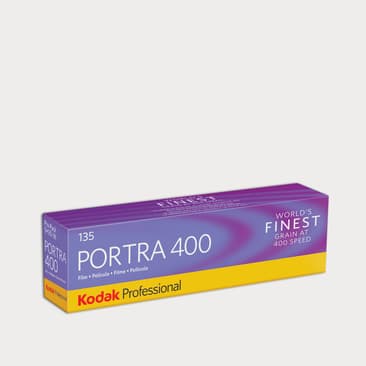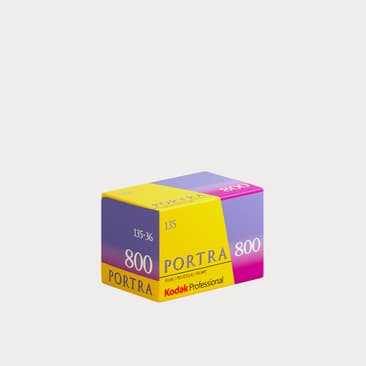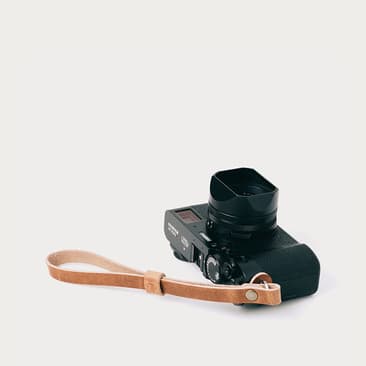I Was Totally Wrong About Rangefinder Cameras
A personal chronicle of embracing rangefinder cameras and refining my photographic journey with the Leica M6.
My Leica M6 has completely transformed my rangefinder camera perceptions in three months. I used to be quite skeptical about them. Every time I tried one, it just didn't feel right. But as they say, opinions can change, and shooting styles can evolve.
Thus, I'm writing this to hold myself accountable for my previous judgments and show that sometimes being wrong is okay.
(Disclaimer: Although I'm sharing my experience with a film rangefinder, many of my thoughts and experiences also apply to digital rangefinders!)

Kodak
Professional Portra 400 Color Negative Film 35mm
Eyeing the go-to choice of pro film shooters? Kodak Portra Film at true ISO 400 delivers spectacular skin tones and color saturation in 35mm format
Buy for $79.99
Misconception #1 - Glasses and Frame Lines
Now, let's talk about something interesting — my eyeglasses. Surprisingly, when I use a 50mm lens on a rangefinder, I can see the full-frame lines without pressing my eye against the viewfinder. This works perfectly for me since 50mm is my favorite focal length, and knowing I can quickly capture shots without any hassle is a relief. Even though I can't see the edges of the frame lines when shooting with my other beloved focal length – 28mm — I've learned to use the center focus patch as a guide to ensure my compositions are level. I shoot with the knowledge that there will be more information on all sides of the image, and so far, it has worked out wonderfully for me.

Kodak
Professional Portra Color Negative 800 35mm Film
You want all the advantages of a high-speed film along with finer grain, higher sharpness, natural skin tones? Kodak Professional Portra 800 35mm film delivers!
Buy for $18.99
Misconception #2: Shooting deep depth of field is boring.
Wow, I could not have been further off base with this one. It is so satisfying to shoot more images between F/5.6-11. It sounds silly, but I never desired to shoot more profound depth-of-field pictures for much of my work, largely due partly to the work I was surrounded by on Instagram. I started my career in wedding photography, and the look and versatility of wide apertures were a massive part of my workflow. I still love the shallow depth of field, and I love that my Canon R5 is more intelligent than me because it hits focus on a subject's eye at F/1.2 every time.
However, the daily use of a rangefinder is rewiring my creative thinking. It compels me to expand my perspectives beyond a shallow depth of field, as that was never its primary intended purpose. Whenever I pick up my M6, my creative mindset shifts as I actively seek images I wouldn't typically capture with my other cameras.

Clever Supply
Skinny Wrist Strap (Split Ring)
Never drop your camera again? Made from premium leather the Clever Supply Skinny Wrist Strap is made from a 3/4" Strap and is perfect for minimal carry
Buy for $54.00


Misconception #3: Zone focusing needs to be clarified.
While zone focusing is not exclusive to rangefinders, the design of rangefinders offers a heightened level of intuitiveness when it comes to this technique. It entails comprehending the distance between oneself and the subject, adjusting the focus direction and aperture accordingly, and shifting the focus from focusing itself to the act of capturing the shot.
In the images presented below, I employed zone focusing with my M6, aligning the focus for each subject based on their respective distances. Instead of hurriedly raising my camera to my eye and striving to attain precise focus, I could devote more attention to composition to secure that my images were sharp and well-focused. What used to perplex me has granted me the freedom to produce more compelling and spontaneous photographs.


Misconception #4: Rangefinders are not "portrait" cameras.
This one was personal for me. While I firmly believe that SLR-style cameras are better suited for portrait work, my issue arose from confining rangefinders within a narrow framework. I was so convinced that rangefinders were ill-suited for portraits that I never explored their potential in such a context. A remarkable shift occurred within me when I embarked on a photo shoot with musician Moyana Olivia.
I can't explain exactly what happened, but something just… clicked. The rhythm of moving between frames and scenes felt so fluid, and I started to appreciate the ergonomics of the rangefinder in a portrait context. Unlike my beloved SLRs (s/o Mamiya 645AFD!), my M6 only covers half of my face, and I felt like I could connect with Olivia more because there was less between us.




I've never been so happy to be proven so wrong about something. The more receptive I have become to the rangefinder process, the more my eyes have opened to an entirely new realm of photography and image creation. I understand that much of what I've expressed here may seem obvious to those who have extensively used rangefinders, and I acknowledge that. These insights are not revolutionary by any means. However, for those who, like me, harbor doubts about rangefinders – I urge you to give them a chance. Clinging to assumptions only hinders one's growth as an artist.
So, at the very least, I encourage you to try it out for yourself — because you never know where it may lead you.







